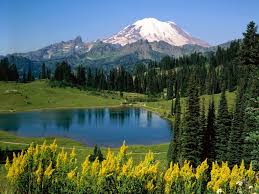 A CHILD’S sense of wonder is an integral part of his life. Children are curious about their world and the things around them. They are patient with small creatures around them. They often wonder what clouds are made of.
A CHILD’S sense of wonder is an integral part of his life. Children are curious about their world and the things around them. They are patient with small creatures around them. They often wonder what clouds are made of.Many adults have been amazed by how intent and patient a two-year-old can be when he follows an ant trail. You may even have seen a three-year-old chasing after a dragonfly in the garden.
Through the child’s eyes, adults can take delight in sharing the wonder and awe that nature inspires in each of us, regardless of our age or the environment we live in.
To nurture this keen appreciation of nature, children need a significant adult in their lives to share their interest.
Don’t worry if you know nothing about the rhinoceros beetle or coniferous plants. You can learn alongside your child as he explores nature. You don’t have to have all the answers; just show enough enthusiasm to spur your child’s interest.
Children are spontaneous when they explore. They do not think about what they know or do not know. They just pick up ideas as they go along. They use their five senses to discover the world. They listen, look, smell and touch to find the answers to their questions. Observation is a powerful tool for children to gain knowledge and skills.
Young children need a stimulating environment. You can provide this by allowing your child to explore and experiment. Make a mess and find out what it feels like. Talk about everything.
Instead of allowing your child to sit for hours watching “educational” television programmes, take him out to the garden or the park. Talk about the living organisms that exist in the outdoors. Compare the different plants and listen to your child tell you what he observes.
Research shows that children need to connect with the natural world regularly for healthy growth and development. Disconnection from nature leads to problems such as childhood obesity, children’s dislike and even fear of the outdoors, and increased reliance on behaviour-regulating medications.
One Japanese preschool undertook a silkworm project to allow their children to learn about the life-cycle of silkworms. They believe that children’s learning through discovery about living creatures and care of plants can help children gain a better understanding of their role in the natural world.
Children should be allowed to climb over, crawl under, and come into contact with dirt, sand, mud and just about anything there is in nature that is meant for them to experience and enjoy. One mother declared that her preschool son’s conversations are packed with facts that he observed and experienced. He is increasingly able to describe the things he has touched, smelled and handled; in the past, when he spent most of his time in front of the TV, his ideas were limited and he lacked enthusiasm.
Today’s children spend less time outdoors than before. Many are afraid to venture out because they have developed misconceptions of the natural world. They fear getting bitten by insects or wild animals.
A child is born with 100 billion brain cells. But the number of brain cells does not determine learning ability. Connections do. Interconnected pathways between cells allow a child to connect one thing to another, enabling him to make sense of the world around him.
The more cells that are connected, the more the child learns. When children start planting vegetable plots athome, they observe the plants growing. They will come to realise that plants provide food for them, and that new plants grow when the seeds are planted in soil.
It is important to help children understand that nature provides the air we breathe and the energy we use, and is also the source of all our material needs, for instance, food, clothing, buildings and furniture.
Enjoying and loving nature is one of the factors that motivate people to preserve nature. We cannot expect children to respect and care about something they do not know. Watching small insects at work in their habitats can help children learn some very useful life lessons.
When children play in a river or near a waterfall, they experience and observe water currents. They discover some objects sink and others float.
Parents can encourage children with open-ended questions like “What do you think will happen?” or Can you find out where this trail starts/ends?” or “What else can you see?” These interactions can spur the child to find out more about the world he lives in.
These early science experiences help children develop and internalise an understanding of the physical laws of nature.
Watching how materials like sand or dirt change with the addition of water helps children learn about transformation of objects and the difference between solids and liquids.
Bonding with nature can greatly enhance your child’s learning. They gain greater awareness and develop keener observational skills.
Source: http://parenthots.com/features/Bonding-with-nature-can-help-enhance-learning.aspx












0 Responses so far.
Post a Comment